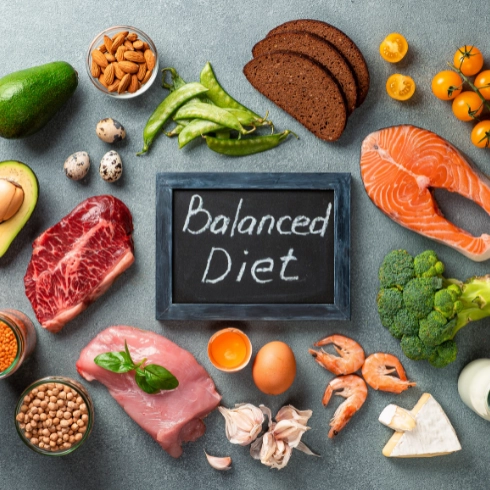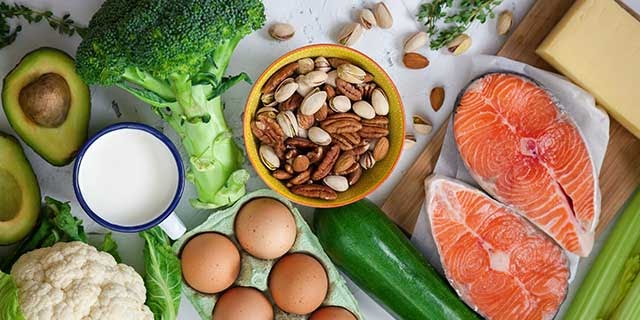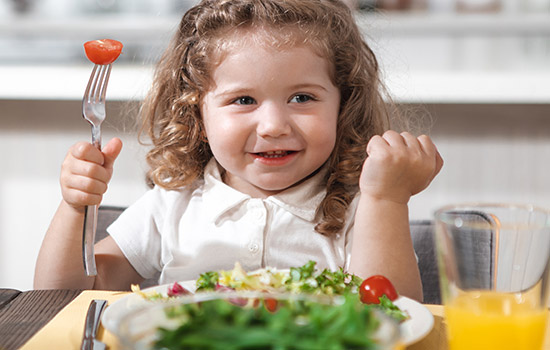It may be a huge chore to plan, prepare, and feed your child breakfast, lunch, and supper, especially if they are a finicky eater. But, kids must eat, and as parents, we may try to feed them healthful food.
Using a dietary plan is beneficial. Children’s needs alter as they mature, and when they pass the toddler-preschool age group and enter the 5-7 age range, they become more active and spend longer hours at school.
Read More: Conquer Your Inner Critic: 5 Ways to Deal with Feelings Not Good Enough.
These are some key meals your developing child needs, along with other foods to stay away from and the recommended daily intake for children between the ages of 5-7.

Nutritional Needs For Children Ages 5-7: What To Eat
Between the ages of five and seven, kids should have a balanced diet that includes foods from all the main food groups. This denotes a healthy balance of cereals, fruits, vegetables, dairy, proteins, and fats.
Their primary dietary demands are met by these food types. Food for building muscle (protein-rich foods like pulses, poultry, meat, fish, nuts and oilseeds, milk and milk products, beans and more), food for energy (carbohydrates and fats that can be found in millets, whole-grain cereals, ghee, nuts, oilseeds, and good, unrefined sugar), and food for boosting immunity (the vitamins and minerals that protect our body from infection and disease). Green leafy vegetables, different types of vegetables, fruits, eggs, dairy products, spices, and herbs, among other foods, all contain them.
Carbohydrates:
Energy is provided by carbohydrates. Grains like roti, bread, and rice, as well as other starchy foods like potatoes, ideally with the skin on, must be included in a child’s diet at this age.
Proteins:
Children who are developing need proteins for optimum growth. High in protein and an essential ingredient for children’s nutrition are pulses and beans. Besides meat, fish, and poultry, other acceptable sources of protein include paneer and tofu.
Veggies & fruits:
Vegetables supply nutrients, vitamins, and fibre. Fruits, which are rich in vitamins, fibre, and natural sugars, are also a crucial component of a child’s diet.
Dairy:
Dairy products are a great source of protein and calcium (paneer, cheese). Children require three servings of dairy products per day, such as milk or yoghurt.
Fats:
Fats should be a part of a child’s dietary plan since they are essential for their growth and development. Make the correct proportions of healthy fats like ghee and coconut oil your choice.
Nutritional Needs For Children Ages 5-7: What To Avoid
There are some foods that youngsters ought to stay away from at all times. These foods are convenient, aesthetically pleasing, and heavily processed with a lot of sugar, fat, and salt. They provide youngsters with intense flavour and empty calories that are nutritionally worthless.
Cereals for Breakfast:
These days, packaged cereals are a genuine annoyance since they are widely available at supermarket and kirana stores. While some claim to be produced with ragi, oats, various millets, and whole grains, many are really laden with extra sugar. The sweetness and other flavours more than make up for what little nutrition they do have because they are whole grains. You might as well give your youngster a parantha with some ghee and jaggery instead of a cereal that makes the promise to be as delicious as a roti.
Salami, Bacon, and Sausages
The English breakfast of bread and sausage seems delicious in books and movies, but ground meat with fillers, salt, chemicals, and colours isn’t really healthy. Despite the fact that they are easy to prepare, they are loaded with fat, preservatives, and nitrates to give them a pink tint. The chance of developing cancer, heart disease, stroke, diabetes, and obesity later in life is raised by these so-called “proteins.” Including eggs in your child’s nutrition plan as they are a much superior non-vegetarian protein source for breakfast and can be made in a variety of ways.
Iced Foods:
Nuggets are another widely consumed and practical food. There are many options available, but none of them are healthy for your children and shouldn’t be included in their daily nutrition plan. Examples include chicken nuggets, cheese and vegetable nuggets, jalapeo poppers, and fish fingers.
Foods that have been flash-fried and then frozen are very high in salt, saturated fat, and preservatives. Also, they are created from inferior meat, fish, and vegetable leftovers. These bite-sized pieces are cooked before being frozen to help the breadcrumbs stay, which results in a fatty, high-calorie dish. Prepare cutlets or aloo tikkis at home if you want to give your kids something fried.

Do Children Require Four Meals A Day?
Three meals a day are often the focus of a nutrition plan for kids, but since kids grow hungry between meals, they could also require snacks.
The provision of nourishment to children who may be picky eaters or who may not have eaten properly at their normal meal is another important justification for snack time in between meals. This issue is not unusual. Children can go through periods where they don’t eat well, or they may occasionally become sidetracked and eat less, or their regular routine may occasionally go by the wayside, causing them to skip meals or eat less.
Read More: Benefits of Yoga: Include it in Your Daily Routine to Keep Yourself Fit.







